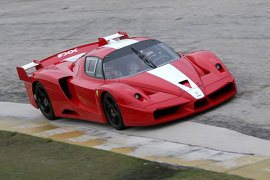FERRARI FXX Models/Series Timeline, Specifications & Photos
First production year: 2005
Engines: Gasoline
Body style: Coupé (two-door)
Based on the Ferrari Enzo, the FXX was a track-only supercar that combined the technology of an F1 racer with the exclusive privilege of owning one because, besides the huge price, it was only built in 30 units.
Ferrari developed the FXX for those who wanted to enjoy the performances of their toy in a controlled environment, as in on the track. That's why the Italian carmaker delivered the vehicle on Ferrari-approved tracks and assisted the driver with all the equipment and technology to ensure them that they'll have a thrilling experience with no mechanical problems whatsoever.
It looked very aggressive, with its front nose that looked inspired by an F1 racer. A very raked, curved windshield fitted with one wiper offered the driver an excellent look at the road. The ridiculously small headlights were not meant to light the road but to be seen on the track by other competitors during a daytime race. From its profile, the extracting vents behind the front wheels helped the big rear air-intakes to feed the V12 engine with plenty of air. In addition, the race-ready vehicle featured a small sliding opening in the side windows to allow the driver to get some fresh air.
Inside, there was nothing fancy about this supercar. The cockpit was offered room for two in sports seats fitted with four-point harnesses, and there was no stereo in the center stack. The music came from the engine placed behind the cockpit. The carbon-fiber dashboard featured four vents to keep the driver cool during a race, while atop the center stack, a telemetry display showed the driver various settings and times on a lap. Fronting the driver, the instrument panel revealed another TFT display for other data regarding the car's engine, speed, and tachometer.
Under the hood, Ferrari placed a 6.3-liter, naturally-aspirated V12 that produced 800 PS (789 hp) and paired it with an automated gearbox with paddle-shifters behind the steering wheel.
